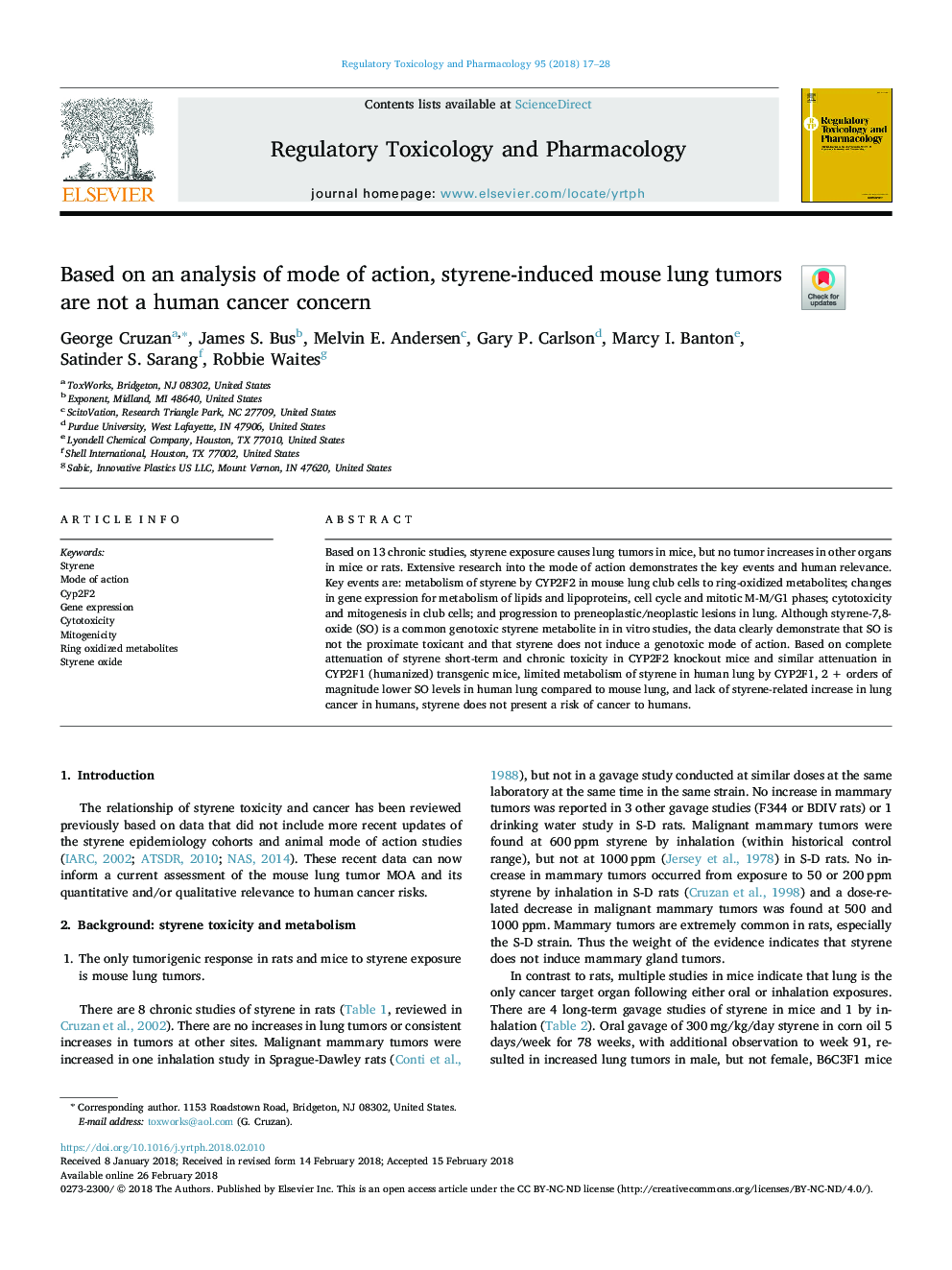| کد مقاله | کد نشریه | سال انتشار | مقاله انگلیسی | نسخه تمام متن |
|---|---|---|---|---|
| 8551305 | 1562107 | 2018 | 12 صفحه PDF | دانلود رایگان |
عنوان انگلیسی مقاله ISI
Based on an analysis of mode of action, styrene-induced mouse lung tumors are not a human cancer concern
ترجمه فارسی عنوان
بر اساس تجزیه و تحلیل شیوه عمل، تومورهای ریه موشهای ناشی از استایرن، نگرانی سرطان انسان نیستند
دانلود مقاله + سفارش ترجمه
دانلود مقاله ISI انگلیسی
رایگان برای ایرانیان
کلمات کلیدی
موضوعات مرتبط
علوم زیستی و بیوفناوری
علوم محیط زیست
بهداشت، سم شناسی و جهش زایی
چکیده انگلیسی
Based on 13 chronic studies, styrene exposure causes lung tumors in mice, but no tumor increases in other organs in mice or rats. Extensive research into the mode of action demonstrates the key events and human relevance. Key events are: metabolism of styrene by CYP2F2 in mouse lung club cells to ring-oxidized metabolites; changes in gene expression for metabolism of lipids and lipoproteins, cell cycle and mitotic M-M/G1 phases; cytotoxicity and mitogenesis in club cells; and progression to preneoplastic/neoplastic lesions in lung. Although styrene-7,8-oxide (SO) is a common genotoxic styrene metabolite in in vitro studies, the data clearly demonstrate that SO is not the proximate toxicant and that styrene does not induce a genotoxic mode of action. Based on complete attenuation of styrene short-term and chronic toxicity in CYP2F2 knockout mice and similar attenuation in CYP2F1 (humanized) transgenic mice, limited metabolism of styrene in human lung by CYP2F1, 2Â +Â orders of magnitude lower SO levels in human lung compared to mouse lung, and lack of styrene-related increase in lung cancer in humans, styrene does not present a risk of cancer to humans.
ناشر
Database: Elsevier - ScienceDirect (ساینس دایرکت)
Journal: Regulatory Toxicology and Pharmacology - Volume 95, June 2018, Pages 17-28
Journal: Regulatory Toxicology and Pharmacology - Volume 95, June 2018, Pages 17-28
نویسندگان
George Cruzan, James S. Bus, Melvin E. Andersen, Gary P. Carlson, Marcy I. Banton, Satinder S. Sarang, Robbie Waites,
